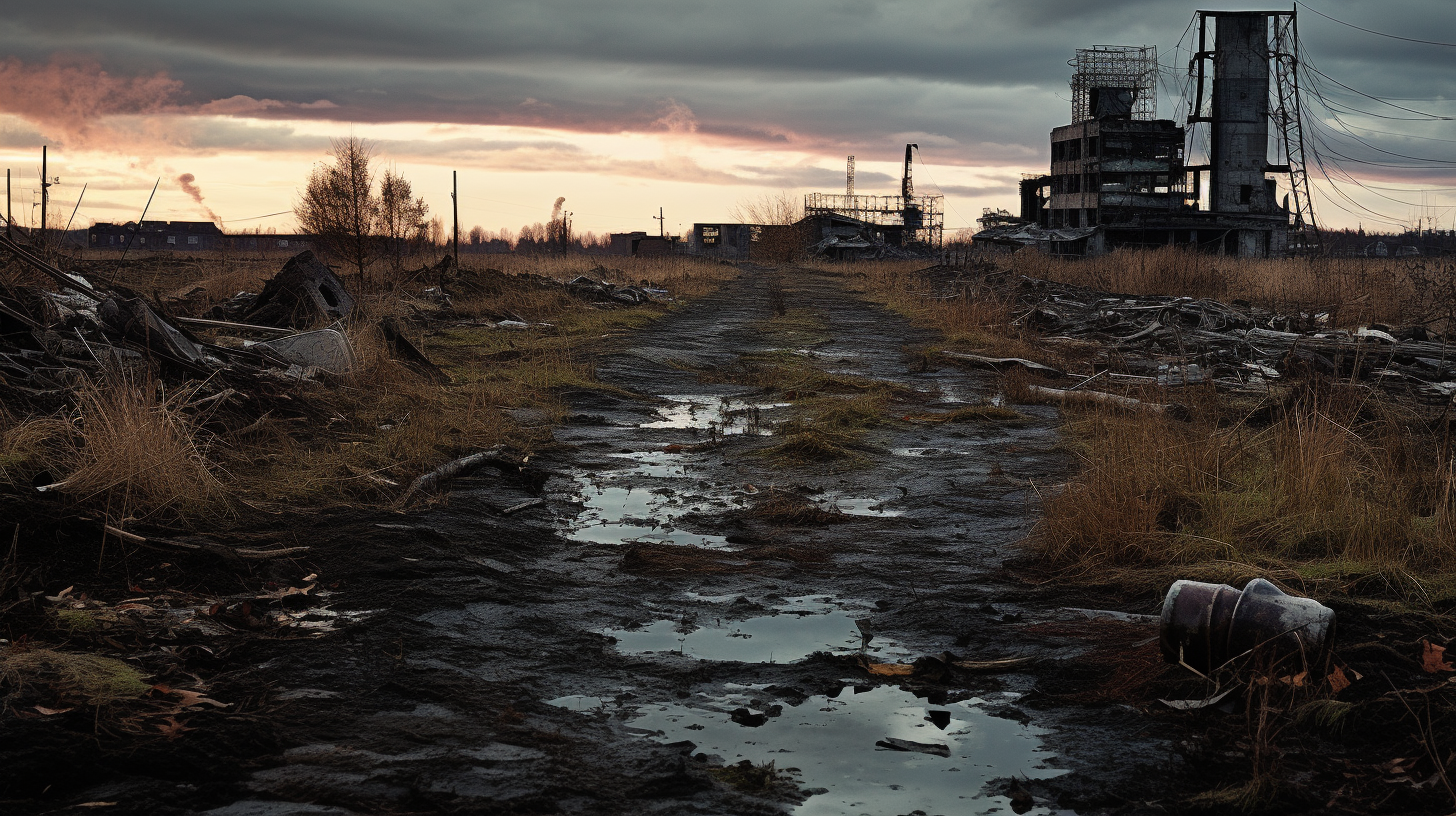The armies of nature march through the vestiges of civilization, reclaiming the battlefields that were once the thriving farmlands of humanity’s insatiable growth. The ‘Gales of Growth’ rage across the forsaken plains, summoning the forces of flora and fauna in a relentless surge. This is not a story of serene conservation, but a visceral and unyielding offensive by the natural world against the remnants of a society that turned its back on the rhythms of Earth.
In an area once known for its lush crops and vibrant rural communities, desolation now rules. Superstorms converged with a relentless drought, toppling economies and evacuating towns. Farmers were forced to abandon their fields, leaving behind a tableau set for nature’s harsh return. They lament the brutal irony: their toil once designed to harness the land now baits the wild’s resurrection. But who is to answer the cries of the departed?
As years passed, intellectual debates raged on whether engineers or ecologists could design a solution. But while whiteboards were filled with ideas and equations, the tempest outside silently smirked, acknowledging no authority but its own. We witness now, through wind-lashed eyes, civility’s structures being dismantled. Trees have become the new sentinels, roads are buried under wildflowers, and in the arduous labor of tumbleweeds, a new realm rises from the dust.
The ‘Gales of Growth’ depict a confluence of chaos and beauty where wild mustangs reclaim their ancestral paths, kicking up clouds of soil, long free of pesticides’ grip. Vines spiral around deserted homesteads with reckless abandon, celebrating victory with every inch claimed. It’s a symphony orchestrated by an insatiable Earth, content no longer to play the silent backdrop to human drama.
Recent reports suggest that in some areas, wildlife populations have grown exponentially; wolves follow their prey among the corn’s brittle skeletons, echoing the howls of renaissance. Ecosystems, deemed extinct, stir beneath the rubble and harvest their chance at evolution’s podium. The sheer variety of lifeforms now documented is both astonishing and bewildering to the few who dare to observe it.
In this lyrical annihilation of human pride, we find not the grace of balance but the voracious claim of an Earth scorned. Unpredictable weather patterns have demolished the last assumption of human supremacy. Now, as mankind confronts the furies unbridled, a single question remains unanswered: will this world be remembered for its final act of humility or its enduring legacy of hubris?
Our downfall provides a neonatal stage for the wild; one where industrious roots crack open concrete hearts and the remnants of pesticides are cleansed by deluges. As the human chapter wanes, a bold narrative unfolds, punctuated by untamed creeks and roaming beasts that govern by inherent lore, far removed from the complacency that once spelled our own ruin.
Perhaps there is irony to be found in this relentless overgrowth, that as the constructs of our dominion fray, a poetic resilience blossoms. In the end, the ‘Gales of Growth’ serve as a stark reminder: the furnace of nature’s will burns on, indifferent to the fates of those who once stoked its flames with disregard.
In light of such turbulent renaissance, we must ask ourselves: is it not the quintessential time to turn to the chronicles of the old world, to extract but a sliver of wisdom, and reframe our place within a universe that demands respect rather than submission? As the reader digests the scenes depicted within this narrative, it is only fitting to ponder the monumentality of our decisions, or lack thereof.
